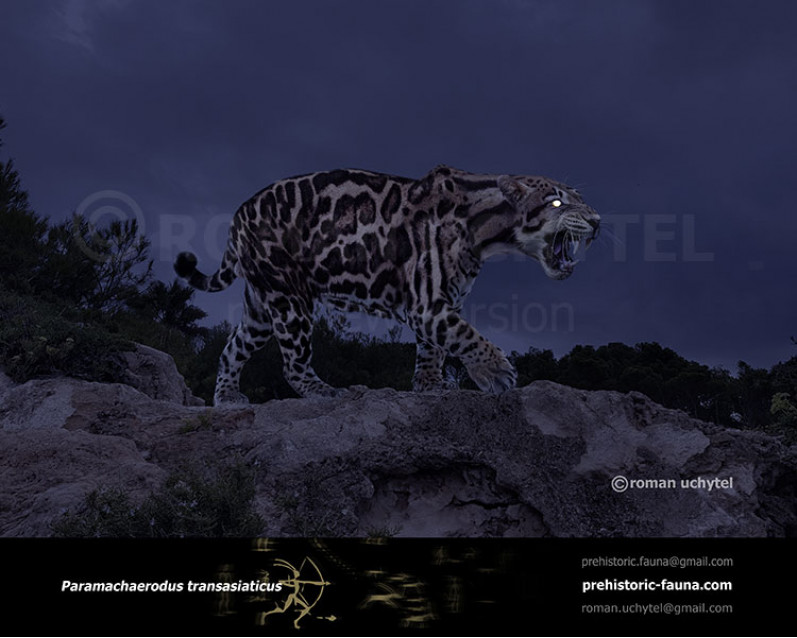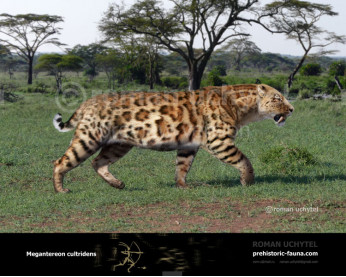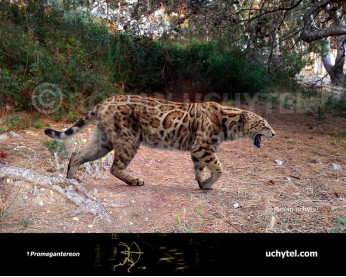Paramachaerodus transasiaticus
486486Li, Spassov, 2017. A new species of Paramachaerodus (Mammalia, Carnivora, Felidae) from the late Miocene of China and Bulgaria, and revision of Promegantereon Kretzoi, 1938 and Paramachaerodus Pilgrim, 1913
New Machairodontinae material from the late Miocene localities of Hezheng (China) and Hadjidimovo (Bulgaria) represents a new species of Paramachaerodus Pilgrim. Both localities are similar in age and suggest that the new species had a very large geographic range extending from northwestern China adjacent to the Tibetan Plateau (Gansu Province) to southeastern Europe or probably to all of southern Europe. The new species—Paramachaerodus transasiaticus sp. nov is characterized by a combination of features of “Promegantereon” and Paramachaerodus. This specific morphology, as well as the age of the Hezheng and Hadjidimovo (early Turolian, after the European Land Mammal Ages) put the new species in intermediary position between “Promegantereon” and Paramachaerodus. The new felid material give grounds to discuss and revise in a new light the systematic and evolution of the “Promegantereon”–Paramachaerodus lineage, which should represent successive stages of one and the same genus: Paramachaerodus Pilgrim.
Li, Spassov, 2017. A new species of Paramachaerodus (Mammalia, Carnivora, Felidae) from the late Miocene of China and Bulgaria, and revision of Promegantereon Kretzoi, 1938 and Paramachaerodus Pilgrim, 1913
New Machairodontinae material from the late Miocene localities of Hezheng (China) and Hadjidimovo (Bulgaria) represents a new species of Paramachaerodus Pilgrim. Both localities are similar in age and suggest that the new species had a very large geographic range extending from northwestern China adjacent to the Tibetan Plateau (Gansu Province) to southeastern Europe or probably to all of southern Europe. The new species—Paramachaerodus transasiaticus sp. nov is characterized by a combination of features of “Promegantereon” and Paramachaerodus. This specific morphology, as well as the age of the Hezheng and Hadjidimovo (early Turolian, after the European Land Mammal Ages) put the new species in intermediary position between “Promegantereon” and Paramachaerodus. The new felid material give grounds to discuss and revise in a new light the systematic and evolution of the “Promegantereon”–Paramachaerodus lineage, which should represent successive stages of one and the same genus: Paramachaerodus Pilgrim.






